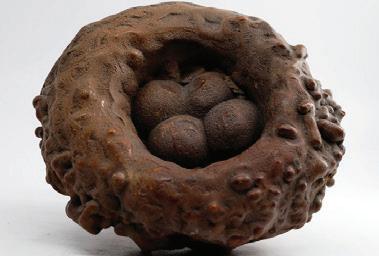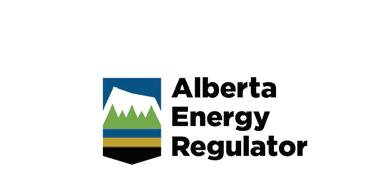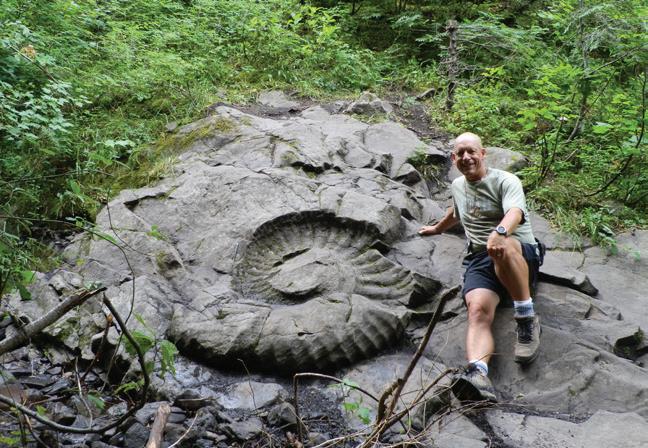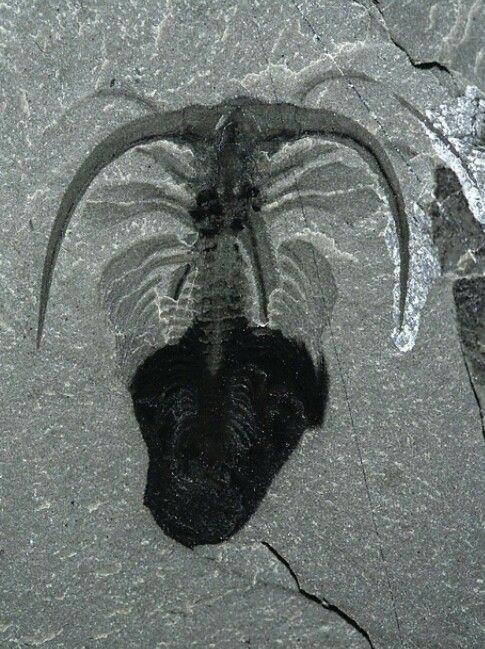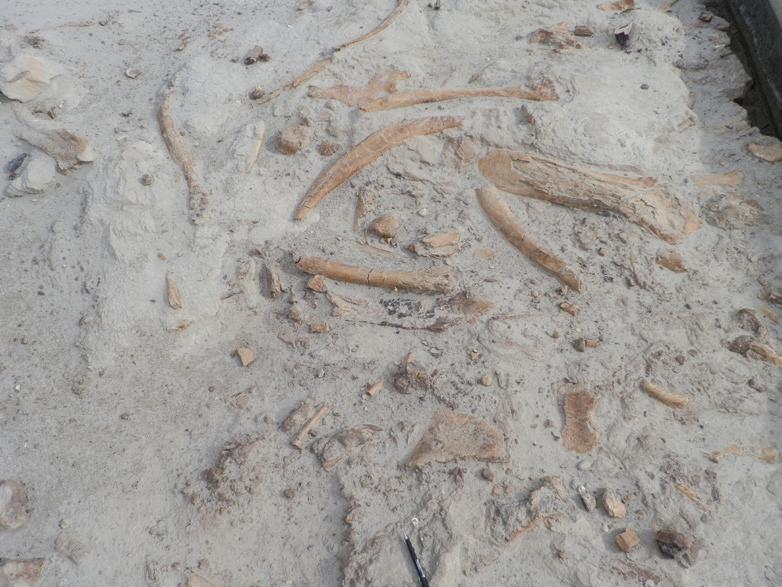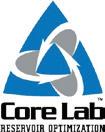The Alberta Palaeontological Society
Spreading the Wonders of Paleontology and the Fascinating World of Prehistoric Life for the Past Forty Years
TAKO KONING, SENIOR GEOLOGIST/CONSULTANT
The Alberta Palaeontological Society (APS) is a Calgary-based non-profit organization founded almost 40 years ago in 1986. I joined the APS in 2015 after returning to Calgary from many years living and working overseas, and I have become involved by attending the monthly meetings, giving presentations, and leading field trips each summer. For members of the Canadian Energy Geoscience Association (CEGA) with an interest in palaeontology, I very much recommend you become involved with the APS.
The following is from the APS website:
Our main goal is to promote the science of palaeontology through study and education. The APS makes important contributions to the field by discovering new findings and responsibly collecting, curating, and displaying significant fossil specimens. We are passionate about educating the general public, sharing knowledge of palaeontological discoveries, and fostering an appreciation for the ancient past.
Moreover, the society is committed to preserving palaeontological materials for the benefit of future generations. To achieve our mission, the APS actively collaborates with professional and academic communities, working together to safeguard and enhance the understanding of Alberta’s rich cultural heritage.
The Alberta Palaeontological Society is a non-profit, volunteer operated organization dedicated to spreading the wonders of palaeontology, ensuring that people of all ages can explore and appreciate the fascinating world of prehistoric life.
MONTHLY MEETINGS
Meetings of the APS are held every third Friday of the month, except in the summer when the APS has a variety of palaeontological field trips. The meetings are held at 7:30–9:00 PM in Room B108, Mount Royal University.
The following are examples of the subjects presented at the monthly meetings:
• Eggs, nests and dinosaur behavior: Evidence from the Morrison Formation, Colorado Plateau, by Dr. James Kirkland, State Paleontologist, Utah Geological Survey, Salt Lake City, USA (February 21, 2025)
• What really killed the dinosaurs? A look at the latest developments, by Dr. Francois Therrien, Royal Tyrell Museum of Palaeontology, Drumheller (April 11, 2025)
• A brief history on the evolution of birds, by Ashley Hall, Museum of the Rockies, Bozeman, MT, USA (May 9, 2025)
Upcoming presentations in the second half of 2025 include:
• September 19, 2025, Jessica Theodor, University of Calgary, New species found at John Day Fossil Beds, National Monument, Mitchell, Oregon, USA
• October 7, 2025, Tako Koning, Senior Geologist/Consultant, Joggins Fossils Cliffs, Nova Scotia: a Carboniferous (320-million-years-old) highly diverse paleoecology and a UNESCO World Heritage Site
K/Pg (Cretaceous/Paleogene) mass extinction boundary on
Meteorite entering Earth’s atmosphere near Chicxulub, Mexico at the end of Cretaceous approximately 66.5 million years ago.
Cretaceous/Paleogene (K/Pg) boundary at Knudsen’s Farm.
PHOTO CREDIT: Henrietta Koning
SUMMER FIELD TRIPS
The following field trips were be held in the summer of 2025:
• Eocene plants and insects, Republic, Washington. Leader: Georgina Hoffman (June 21, 2025)
• K/Pg mass extinction boundary, Knudsen’s Farm, Huxley, AB. Leader: Tako Koning (July 5, 2025)
• Cretaceous dinosaur bonebed & trackways, near Raymond, Alberta, Leaders: Les Wingerter and Keith Mychaluk (July 12, 2025)
• Grasshopper Glacier and Beartooth Butte, near Cooke City, Montana, leaders: Keith Mychaluk & Vaclav Marsovsky (August 15–17, 2025)
• Fossils in the Tyndall Building Stone, Walking Tour, Calgary. Leader: Tako Koning (September 6, 2025)
APS field trip on July 5, 2025 to see the
Knudsen’s farm, near Huxley, AB.
PHOTO CREDIT: Hank Beeksma
APS fieldtrip in August 2020 to view the giant ammonite in Jurassic-age sedimentary rock near Fernie, BC.
PHOTO CREDIT: Henrietta Koning
Attendees listening to presentations at Paleo 2024 in the Jenkins Theatre, Mount Royal University.
PHOTO CREDIT: Tako Koning
The Annual Palaeontology SymposiumPaleo is an annual event is held every March in the Jenkins Theatre at Mount Royal University. It is a full day of educational talks and displays for all ages. Attendees bring their fossils for identification by members of the APS. There is no cost to attend— admission is free.
AT PALEO 2025, THE FOLLOWING ORAL PRESENTATIONS WERE GIVEN:
• Dr. Cam Tsujita, Western University, London, ON: Squid games: Challenges in ammonite paleoecology
• Dr. Mathew Vavrek, Cutbank Palaeontological Consulting, Calgary: Challenges in dinosaur diversity due to continental fragmentation
• Darren Tanke, Royal Tyrell Museum of Palaeontology, Drumheller, AB: Update on the Kasie Hadrosaur Project in Dinosaur Provincial Park
• Tako Koning, Professional Geologist, Calgary: Joggins Fossils Cliffs, Nova Scotia: A Carboniferous (320-Million-Years-Old) highly diverse paleoecology and a UNESCO World Heritage Site
• Dr. Kathleen Pigg, Arizona State University, Tempe, AZ, USA: Diverse plant fossils of Early Eocene flora of Republic, Washington State, USA
• Dr. Hillary Maddin, Carleton University, Ottawa, ON: Insights into amphibian evolution: Paleozoic of Atlantic Canada
• Dr. Emily Bamforth, Philip J. Currie Dinosaur Museum, Wembley, AB: Tyrant lizard kings and queens, eh?: A tale of Canadian t. rexes
AT PALEO 2025, THE FOLLOWING POSTER PAPERS WERE AVAILABLE FOR VIEWING AND DISCUSSING WITH THE AUTHORS:
• Leslie Eliuk, GeoTours Consulting Inc, Calgary: Reefs by the roadside – a tubulation of some Canadian localities
• Lihab Chowdhury, Nathan Cochrane, & Jason Anderson, University of Calgary: Preparation and identification of Permianage fossils from the Briar Creek locality of the Nacona Formation in Texas
• Jessica Theodor, Selina Viktor Robson, Kaigh A. Nugent, University of Calgary, & Shane T. Tucker, University of Nebraska State Museum: Basal is better: a re-evaluation of Syndyoceras cooki (Artiodactyla, Protoceratidae) petrosal morphology and the pitfalls of inferring evolutionary relationships based on derived
• Emily Bamforth & Jackson Sweder, Philip J. Currie Dinosaur Museum, Wembley, AB: April Archosaur Absurdity: A seasonal online program combining science, paleoart, school programming and public outreach
• Jackson Sweder, Emily L. Bamforth, Aidan Kerr, Philip J. Currie Dinosaur Museum, Wembley, AB & Maximillion Scott, University of Manitoba, Winnipeg, MB: 3D scanning the Pipestone Creek Bonebed as a mapping technique during fossil excavation and preparation: preserving key content of fossil localities
• Kaitlin T. Lindblad, University of Saskatchewan & Emily Bamforth, Philip J. Currie Dinosaur Museum, Wembley, AB: Saskatchewan eusuchian census: New crocodyliform specimens from the Canadian prairies
• Kathrine Bramble, Chrisopher N. Jass, & Christiana I. Barron-Ortiz, Royal Alberta Museum, Edmonton, AB, & Michael C. Wilson, Douglas College, New Westminster, BC: A new, ridiculously large Bison from Calgary, Alberta, and implications for biological patterns in the Ice Free Corridor
• Joshua Doyon, University of Alberta, Edmonton, AB., Caleb M. Brown, Royal Tyrrel Museum of Palaeontology, Drumheller, AB, & Philip J. Currie, University of Alberta, Edmonton, AB: Growth and scavenging: a new specimen of Albertosaurus with implications for ontogeny and interspecific interactions
• Mollie Black, Morgan Goulding, & Nicole Webster, University of Saskatchewan, Saskatoon, SK: Analyzing shell layers in the Island Apple Snail (Pomacea maculata)
• Luke Nelson, Alison Murray, & Don Brinkman, University of Alberta, Edmonton, AB: The structure, tissues and ontogeny of the Enchodus palatine
• Taia C.A. Wyenberg-Henzler, University of Alberta, Edmonton, AB., & John B. Scannella, Montana State University, Bozeman, MT., USA: Behavioural implications of a tyrannosaurid tooth embedded in an articulated skull of Edmontonsaurus from the Hell Creek Formation, Montana
• Fatima Iftikhar & Michael W. Caldwell, University of Alberta, Edmonton, AB., & Aaron R.H. LeBlanc, King’s College London, London, UK: Tooth development and resorption in living Teiidae and its implications on tooth replacement in fossil Mosasuridae
• P.A. Johnston & R.J. Gilmour, Mount Royal University, Calgary, & M.M. Williams, Azure Energy Inc., Calgary & A.J. Nelson, University of Western Ontario, London, ON: Micro-computed tomographic study of commensal boring on Middle Devonian palaeotaxodont bivales, Mellville Island, N.W.T.
• Jack R. Milligan, University of Saskatchewan, Saskatoon, SK., Taia C.A. Wyenberg-Henzler & Corwin Sullivan, University of Alberta, Edmonton, AB., Jackson Sweder & Emily J. Bamforth, Philip J. Currie Dinosaur Museum, Wembley, AB: Preliminary analysis and paleoecological implications of a bitten metacarpal from the Late Cretaceous Wapiti Formation of northern Alberta
• Julien Divay & Alison Murray, University of Alberta, Edmonton, AB: Fluvial ichthyofaunas of the Wasatch and Bridge Formations (early to middle Eocene) southwest Wyoming
• Darius Azmayesh-Fard, Philip J. Currie Museum of Palaeontology, Wembley, AB: Descriptions of a specimen of Corythosaurus (Ornithischia: Hadrosauridae) from Sandy Point, Alberta with comments on cranial variability in the genus
• Brennan P. Martens, University of Alberta, Edmonton, AB, Trevor H. Rempert, Case Western Reserve University, Cleveland, OH, USA, Bethany K. Burke Franklin, The Heritage Museum of Texas Hill Country, Canyon Lake, TX, USA, Alexander P. M Vinkles Melchers, Paleontica Foundation, The Hague, The Netherlands, & Kyle J. Marson, Independent Researcher, Sheffield UK: Frontoparietal morphology of Xenodens calmeniechari revealed by a new specimen from the Maastrichtian phosphates of Morocco
• Kanso Sasaguchi, John Acorn, Corwin Sullivan, & Felix Sperling, University of Alberta, Edmonton, AB: A fossil insect renaissance at the E.H. Strickland Entomological Museum, University of Alberta
• Tako Koning, Professional Geologist: Tyndall Stone, the iconic fossils-rich Late Ordovician 450-million-years old limestone used as a decorative stone throughout Canada – A review of its sedimentology and palaeontology
MEMBERSHIP
The APS describes itself as “the meeting place for amateur and professional paleontologists.” Any person with a sincere interest in palaeontology is eligible to present an application for membership to the society. Single membership is $20 annually and a family or institutional membership is $25 yearly.
Most of the attendees at the monthly meetings and field trips are adults; however, parents often bring their children, since many of them have a keen interest in fossils and the world of palaeontology.
APS ON THE INTERNET
Those looking for more information on the APS, can look at these sites:
Website: albertapaleo.org
YouTube: www.youtube.com/@albertapaleo
Facebook: www.facebook.com/AlbertaPaleoSociety/
The Bulletin of the APS is published quarterly. Copies are archived on the website.
THE APS – RUN BY DEDICATED VOLUNTEERS
OFFICERS
PRESIDENT: Cory Gross
VICE-PRESIDENT: Dr. Emily Bamforth
TREASURER : Mona Trick
SECRETARY: Vaclav Marsovsky
PAST PRESIDENT: Wayne Braunberger
DIRECTORS
EDITOR : Mathew Rhodes
MEMBERSHIP : Daegan Kovaks
PROGRAMS: Walter DiMattia
FIELD TRIPS : Eric Campbell
COMMITTEES
FOSSIL COLLECTION : Howard Allen
LIBRARY: Georgia Hoffman
PUBLIC OUTREACH : Cory Gross
SOCIAL : Virginia Goodman
ANNUAL SYMPOSIUM: Mona Trick
WEBSITE : Eric Campbell
APS-CEGA FUND : Mona Trick
Article 3 in the Geomechanics Today Series
ANKUSH SINGH, TECHNICAL TEAM LEAD, RESFRAC CORPORATION
Introduction
Our understanding of the geomechanics of hydraulic fracturing has evolved considerably over the past decade. In recent years, several breakthroughs have been made possible by advances in diagnostic technologies, particularly the ability to measure at high resolution the strain and pressure changes at locations far from the injection well. We often hear industry veterans say that it seems that the same fractures are becoming longer and higher with every passing year! This is probably because we can observe them at further distances. The key lesson we have learned is the importance of adapting our models and assumptions as new data emerges. Rigid assumptions based on legacy models can often be a barrier to an improved understanding of the subsurface and, consequently, to design optimization.
KEY LEARNINGS DRIVEN BY DATA
It is impossible to exhaustively list all the major leaps of the past few years when it comes to advanced completion techniques, proppant and fluid innovations, and drilling techniques. We have focused on new insights from a subsurface, and particularly geomechanics, lens. For this article, we are steering clear of any discussion on advances in data analytics and machine learning techniques, as we will probably run out of space!
1. FRACTURES ARE LARGELY PLANAR AND PROPAGATE ALONG S Hmax
In the hydraulic fracturing community, there has been an age-old debate between planar and complex fracture propagation. The major disagreements are related to whether hydraulic fractures form complex zig-zag networks, such as the ones described by Fisher et al. (2002) and many similar studies, or if they are effectively planar at the field scale (e.g., McClure et al., 2020). In our view, the debate is largely settled in favor of a dominantly planar fracture propagation at the field scale, with the understanding that complexity does occur on the smaller scale (Figure 1). This understanding has been influenced to a large extent by field observations from multiple data-rich published case studies, such as work completed at the Hydraulic Fracturing Test Site (Ciezobka et al., 2018; Ciezobka, 2021; ; Ciezobka & Reeves, 2020) and ConocoPhillip’s Eagle Ford experiments (Raterman et al., 2018), and many published
fiber optic studies (e.g., Shahri et al., 2021; Ugueto et al., 2019, 2023, etc.). These are also great examples of how industry collaborations and publications benefit the entire community! The common theme in all these datasets is that the hydraulic fractures have been found to propagate in the direction of the maximum horizontal stress (SHmax) with limited or no turning away from the expected azimuth. No large-scale fracture turning or “cracked up” matrix rock has been observed in any of these datasets. Figure 1 shows examples from two prominent studies in the Eagle Ford (Raterman et al., 2018) and Midland Basin (Gale et al., 2018) that show remarkable consistency in hydraulic fracture orientation across thousands of observed fractures in core, image-logs, and fiberoptic strain datasets. These studies do point to some complexity as the number of fractures sampled in the offset well core and image logs is multiple times the number of perforation clusters where these fractures originate. This indicates the occurrence of multiple parallel fractures associated with each perforation cluster. The implications of these multiple parallel fractures are discussed by Raterman et al. (2019, 2020) and Acuña (2020). Additionally, Gale et al. (2018), pointed out smallerscale complexity in the core samples (Figure 1) from the first phase of the Hydraulic Fracturing Test Site (HFTS-1) that might be important for trapping and clustering of proppant grains in the fracture.
The proponents of the complex fracture networks and associated stimulated reservoir volume (SRV) have often pointed to the spread in microseismic events and inferred that it is related to complex orthogonal fracture sets (e.g., Fisher et al., 2002; Weng et al., 2011). Our understanding has since significantly evolved with increased
data availability. A more reasonable explanation for the spread in microseismic events is as follows:
1. Microseismic events are shear slip events triggered primarily by an increase in fluid pressure caused by leak off from the main planar hydraulic fractures into the matrix, causing a wider spatial distribution.
2. The spatial uncertainty of microseismic-event location is significantly higher than what most engineers expect (listen to the seismologists please!).
Are we saying that natural fractures have no role in hydraulic fracturing? Certainly not! We have plenty of examples where pad scale faults cause fluid to leak off in specific directions, most commonly in the orientation along critically stressed fault planes (e.g., Ma & Zoback, 2017b; McClure, 2025). Also, increased natural fractures may cause more pressure dependency during leak off or production.
2. DIRECT DIAGNOSTICS
EXPLODE AND ENABLE MORE CALIBRATED FRACTURE MODELING TOOLS
The process of hydraulic fracturing and subsequent drawdown during production elicits strain and pressure responses from the rock matrix and the pore fluid. Tracking these pressure and strain changes in the far-field gives us an ability to image the fracture and the subsequent drainage. The industry now has access to markedly improved diagnostic capabilities, which give us direct measurement of the changes in strain and pressure in the far-field, enabling us to have a significantly clearer picture of the hydraulic fractures in the subsurface. Some of the diagnostics that have contributed significantly to our improved understanding are listed below.
Fiber optic strain sensing
Fiber optic strain sensing in offset wells has given us tremendous insights into hydraulic fracturing. Shahri et al. (2021) and Ugueto et al. (2023) are our two go-to references to understand the strain signatures of different hydraulic fracture configurations on fiber optic datasets. The incredibly consistent observation from numerous fiber optic datasets is that when the fracture hits a fiber optic cable installed in a monitoring well, the response is exactly what analytical solutions for opening mode cracks, such as the Sneddon solution (Sneddon, 1946), would have predicted (Figure 2, i and ii). Readers who have worked with distributed acoustic sensing (DAS) waterfall plots would be familiar with the typical sequence of strain rate changes during fracture hits: we observe tension ahead of the fracture tip and when the fracture hits we would notice a zone of tension right around the fracture surrounded by two zones of compression on either side driven by the stress shadow exerted by the fracture opening. Fiber optic datasets have provided us with several other insights:
1. Fiber acquisitions consistently show propagation on azimuth with SHmax
2. There is almost no evidence of significant fracture turning in typical shale plays.
3. There is almost always a strong correlation between stage length in the treatment well and width of offset events in monitor wells.
4. Volume to first response (VFR) on offset well fiber data is a very useful calibration diagnostic for fracture simulators to constrain uncertain modeling parameters.
5. Fiber optic measurements in offset wells provide an idea of the fracture morphology and, in some cases, we can resolve the data to the level of individual fractures to obtain metrics like far-field fracture efficiency.






Figure 1. Evidence from recent core-through projects showing clearly that fractures propagate along SHmax with very limited deviation. i) Core and image log data from Raterman et al. (2018) in the Eagle Ford showing the planar fractures along SHmax in the observations with any obvious “shatter glass” damage to the matrix. ii) Stereonet plots of the sampled hydraulic fractures showing a very consistent orientation along the SHmax direction (AAPG © 2018, reprinted with permission from AAPG whose permission is required for further use). iii) Hydraulic fracture orientations from the Midland Basin HFTS-1 project from Gale et al. (2018), again showing very consistent orientation along SHmax. iv, v) Evidence of small-scale complexity in the core samples (AAPG © 2018, reprinted with permission from AAPG whose permission is required for further use).









Figure 2. Some case studies highlighting the usefulness of fracture diagnostics. i) A typical fiber response to an offset well fracture hit by Shahri et al. (2021). ii) Simulation showing the simulated strain rate during a fracture hit using a fully coupled simulator (Shahri et al. (2021). The strain response is exactly what the Sneddon solution would predict for an opening mode fracture plane. iii) A study from Ratcliff et al. (2022) showing the utilization of Volume to First Response (VFR) from sealed wellbore pressure monitoring, giving insights into fracture morphology (Reproduced with the required license and permissions obtained from SPE). iv) An example of an interference test, where a well is put on production and the highlighted pressure response in an offset monitoring well can be analyzed by the DQI method to obtain useful quantities such as the fracture conductivity and the degree of production interference (Almasoodi et al., 2023) (Reproduced from Springer under an open access license).
6. Sealed Wellbore Pressure Monitoring
Exactly as the name suggests, Sealed Wellbore Pressure Monitoring (SWPM) (Haustveit et al., 2020) is a method to detect fracture hits on an offset well by looking at the pressure signature when a fracture has crossed a wellbore. It is a significantly cheaper diagnostic than fiber, with the limitation that it cannot resolve individual fractures in a stage or fracture azimuth. Figure 2 (iii) from Ratcliff et al. (2022) shows an example where the SWPM data was used to constrain fracture morphology using the VFR magnitudes for wells pairs at different distances.
Interference Testing
Interference testing has been increasing in importance over the past few years, especially due to its low cost and the ease of conducting interference tests. It essentially requires observation wells with pressure monitoring capability to be shut-in for a period ranging from a few hours up to a day or two depending on the analysis method, while an
offset well is put on production (POP). It is perhaps the easiest way to get insights into well-spacing decisions, which play a major role in fieldscale optimization. There are many methods for analyzing interference testing. The most common one is the Chow pressure group (CPG) method (Chu et al., 2020; Miranda et al., 2022), which does a good job at qualitatively comparing interference tests amongst different well pairs. One drawback of the method is since that CPG is purely a mathematical construct, it is hard to relate it to a physical property of the fracture, proppant, or the reservoir. Another method that is increasing in popularity is Devon Quantification of Interference (DQI) method (Almasoodi et al., 2023). This method uses the interferencetesting pressure signature to give meaningful physical quantities, such as diffusivity and fracture conductivity. In a subsequent paper, Ponners et al. (2024) generalized this workflow and utilized the DQI results to obtain a quantitative estimate of the impact of interference on the production of the individual wells with changes in parameters, such as well spacing and reservoir properties. Jongeling et al. (2024) showed perhaps the
best way to implement this methodology over the lifecycle of the wells by conducting interference testing at different times during long-term production. It was evident that the connectivity between the wells decreases with time, which suggests that the conductivity of the fracture is decreasing significantly with time. This observation is consistent with proppant conductivity tests, but Jongeling et al. (2024) offer a workflow for quantifying the magnitude of this decrease in-situ with implications on completion designs, well spacing, and long-term trends.
Another diagnostic that we should mention is geochemical fingerprinting. It can significantly reduce the uncertainty of production allocation from different layers and give firm constraints on productive fracture heights.
Albrecht et al. (2022) show a comprehensive example of utilizing geochemical fingerprinting to constrain fracture height growth. This is especially beneficial as vertical well spacing can be extremely important for unconventional optimization where we target hydrocarbons in vertically stacked geological layers.
What about microseismic?
This is a rather tricky question, and people tend to have strong beliefs on the utility of microseismic events as a diagnostic tool for hydraulic fracturing. There have been several examples, such as the HFTS-2 project (Zhang et al., 2021, 2024; Pudugramam et al., 2022), where the microseismic event distribution has underpredicted the fracture geometry compared to direct observations, like fiber optic strain. Based on microseismic events, we would never imagine a height growth in the region of 1500–2000 feet in the HFTS-2 project, which was shown by fiber optic observations (Ugueto et al., 2021; Pudugramam et al., 2022). Since microseismic events are indicative of shear slip along preexisting fractures, they depend on the presence of natural fractures and their orientation and frictional properties of the layers. We still maintain that microseismic is a very useful tool as long we appreciate the mechanisms that lead to triggering microseismic events and the associated uncertainty.

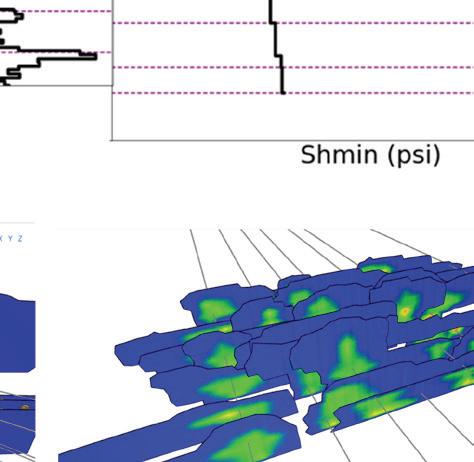

Figure 3. Singh et al. (2025) highlighted this example where two completely different stress profiles are estimated by different operators for two Bakken Formation datasets where the fracture diagnostics observation show similar fracture morphology. The two stress profiles are significantly different due to contrasting assumptions made by the operators about the pore pressure in the Lodgepole Formation. As a result, the study required different modeling assumptions to calibrate the models to the observed data. (All parts of the figure have been reproduced with the required license and permissions obtained from SPE)
3.
Layer-to-layer stress variations in the subsurface are ubiquitous in unconventional reservoirs. In the past few years, we have seen several publications where drastic changes in minimum horizontal stress (Shmin) magnitude have been measured across the reservoir and surrounding layers. These stress changes can have a significant impact on the hydraulic fracture growth and on the optimal design parameters, especially landing zone and vertical and horizontal spacing. However, the industry still suffers from legacy methods using the elastic loading or extended-Eaton models for stress profile estimates that violate several geological principles. These “equations from hell” (to quote Prof. Mark Zoback’s comment in his widely known Stanford University Reservoir Geomechanics course available on edX.com) are often used to calibrate the predicted stress magnitudes to available measurements but are seldom accurate when extrapolated beyond depths where measurements are available. The broad approach of the industry to the stress profile problem can be divided into three camps.
The first camp prefers to rely on matching the fracture height and length diagnostics with different modeling parameters, such as fracture toughness or conductivity of propagating fracture, with the assumption that as long as you are able to match the fracture morphology results to the field observations, the correct stress profile does not matter. Singh et al. (2025) show a case study from two Bakken Formation datasets acquired by different operators, where two models in the same basin required drastically different calibration approaches. These datasets had similar fracture morphology observations but with markedly different input stress profiles. The question remains whether these models will show similar optimal designs as the fracture morphology is matched? It may not always be the case!
The second camp firmly believes in the usefulness of the elastic loading models with sufficient calibration. These models have been modified a number of times with an increasing number of calibration parameters. The two most popular methods are Blanton & Olson, (1999) and Thiercelin & Plumb (1994). One major criticism of these modified methodologies is the sheer number of fitting parameters that significantly increase the risk of overfitting (John von Neuman’s elephant wiggling its trunk!).
I belong to the third camp, which believes in looking at more mechanistic approaches for stress profile prediction. Amongst these approaches, one that is gaining traction is the Viscoplastic Stress Relaxation (VSR) method that accounts for time dependent effects on old sedimentary rocks typical of most North American unconventional plays. This methodology has its origins from the Sone and Zoback experiments of 2014 (Sone & Zoback, 2014a, 2014b), where they observe significant creep deformation in samples from nearly all major unconventional plays. This method is applicable for sedimentary rocks in basins with low strain rates, that are not undergoing significant tectonic deformation in the present day. There are several recent publications that have shown qualitative (e.g., Kohli & Zoback, 2021), semi-quantitative empirical (e.g. Ma & Zoback, 2017a, 2020; McCormack et al., 2021), and fully quantitative approaches combining physics and statistical learning (e.g., Singh & Zoback, 2022; Zoback and Singh, 2025 in prep) for computing VSR based Shmin profiles.
The American Rock Mechanics Association recently organized an insightful debate about stress profiles with three amazing stalwarts in the geomechanics community. I would highly recommend the readers to watch the video, available on YouTube, to get different perspectives about the stress profiles debate.
4. INSIGHTS ON HYDRAULIC FRACTURE DRAINAGE
A lot of these diagnostics have given us a better understanding of fracture morphology. One key uncertainty is what parts of the hydraulic fractures actually contribute to production? Once again, some of the recent data published by operator companies has been extremely useful in improving our understanding of hydraulic fracture drainage. In one case (Cipolla et al., 2022) an observation lateral showed how offset monitoring wells with pressure gauges that provide continuous record of pressure change during depletion can help reduce production and drainage uncertainties. The Cipolla et al. study conclusively shows that for the field in question, the Three Forks Formation is drained by hydraulically fractured wells in the Middle Bakken Formation. This observation immensely helps the field development planning, potentially saving tens of millions of dollars of cost for drilling and completing Three Forks wells, in addition to Middle Bakken wells. The Exxon Midland Basin project (Liang et al., 2022; Benish et al., 2024) took things further and installed several pressure gauges at different distances using oblique observation wells. The results help us understand how fractures are draining from the reservoir at different distances. We studied these two datasets in detail and provided several new insights in our recent paper (Singh et al., 2025). Some of the most important learnings are as follows:
1. The drained length of the fracture is significantly smaller than the hydraulic length.
2. Fractures have finite conductivity with thousands of pounds per square inch (psi) pressure drop across the fracture dimensions.
3. Proppant conductivity reduces significantly with both depletion and time. This is elaborated in detail in the paper.
4. Proppant trapping mechanisms, such as fracture roughness, and small-scale fracture heterogeneity, such as those described in Gale et al. (2018), might be significant in ensuring that the proppant gets distributed across the fracture and is not completely dominated by gravitational settling.
5. IMPACT OF WELLBORE PHYSICS
Another aspect that is getting more attention is the impact of wellbore physics during the fluid injection. We have observed that the fracture morphology depends significantly on how the pumped fluid and proppant gets distributed into the different perforation clusters. For example, if all of the fluid goes into one of the perforation clusters, we get a massive super frac, whereas if the fluid is distributed evenly amongst all the perforation clusters, we get more even fractures with a smaller maximum fracture length. Of course, we would prefer the latter! One way to quantify this is the Uniformity index, which is equal to 1 – standard deviaiton/mean of the fluid and proppant quantities that go into each cluster. Cipolla et al. (2024) quantified the value of getting more uniform fractures by calculating the value of a perfect stage. They estimated that up to one million dollars per well can be saved by making appropriate strategies to ensure more uniform distribution of proppant and fluid across the wellbore. Similarly, downhole perforation imaging tools have allowed to estimate the uniformity of erosion which gives us a proxy for the proppant distribution across a hydraulic fracturing stage (e.g., Cramer & Friehauf, 2024). Dontsov et al. (2023, 2024) and Ponners et al. (2025) show several real-world examples of how multiple complex factors can contribute to the final configuration of proppant distribution across the wellbore.



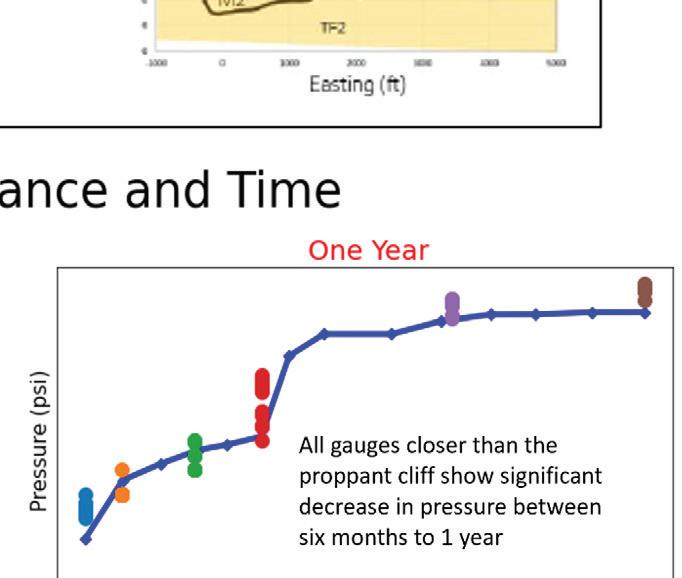


Figure 4 i) The experiment set-up of the Exxon study with the multiple pressure gauges in offset monitoring wells that give a continuous record of offset pressure change with depletion at different distances from the production well (Liang et al., 2022; Benish et al., 2024) ii) Pressure changes observed in the same dataset along with the history matched model by calibrating proppant distribution and conductivity changes with time from Singh et al., (2025). (All parts of the figure have been reproduced with the required license and permissions obtained from SPE)
KEEPING AN OPEN MIND
In the past decade, we have had access to much higher-resolution data, significantly stronger computational tools, and big advances in data analytics that have helped us to obtain a better understanding of subsurface physics. We must appreciate the fact that a lot of the conclusions in the early days of the shale revolution were based on sparse and significantly lower resolution data. Time and again, new insights have shown that conceptual understanding can be altered significantly as new information emerges. The one lesson is that we should be flexible and not treat conceptual models as incontrovertible truth or dogma.
“When the facts change, I change my mind. What do you do?”*
*Allegedly said by John Maynard Keynes until other data comes to light!
ACKNOWLEDGEMENTS
I am extremely grateful to Amy Fox for taking the initiative and helping refine the article. Mark McClure and Garrett Fowler’s support, insightful comments, and review are highly appreciated.
REFERENCES
Acuña, J. A. (2020). Rate Transient Analysis of Fracture Swarm Fractal Networks. Proceedings of the 8th Unconventional Resources Technology Conference. Unconventional Resources Technology Conference, Online. https://doi.org/10.15530/ urtec-2020-2118
Albrecht, M., Borchardt, S., & McClure, M. (2022). Using Geochemical Production Allocation to Calibrate Hydraulic Fracture and Reservoir Simulation Models: A Permian Basin Case Study. Proceedings of the 10th Unconventional Resources Technology Conference. Unconventional Resources Technology Conference, Houston, Texas, USA. https://doi.org/10.15530/urtec-2022-3724091
Almasoodi, M., Andrews, T., Johnston, C., Singh, A., & McClure, M. (2023). A new method for interpreting well-to-well interference tests and quantifying the magnitude of production impact: Theory and applications in a multi-basin case study. Geomechanics and Geophysics for Geo-Energy and Geo-Resources, 9(1). https://doi. org/10.1007/s40948-023-00632-1
Benish, T. G., Brown, J. S., Decker, K. K., Habrial, J. D., Liang, Y., Manchanda, R., Meier, H. A., Solomou, A., Srinivasan, K., & Vice, D. S. (2024, February 12). Accelerating Learning in the Unconventionals Through Integrated Field Experiments. International Petroleum Technology Conference. International Petroleum Technology Conference, Dhahran, Saudi Arabia. https://doi.org/10.2523/iptc-23699-ms
Blanton, T. L., & Olson, J. E. (1999). Stress Magnitudes from Logs: Effects of Tectonic Strains and Temperature. SPE Reservoir Evaluation & Engineering, 2(01), 62–68. https://doi.org/10.2118/54653-pa
Chu, W.-C., Scott, K. D., Flumerfelt, R., Chen, C., & Zuber, M. D. (2020). A New Technique for Quantifying Pressure Interference in Fractured Horizontal Shale Wells. SPE Reservoir Evaluation & Engineering, 23(01), 143–157. https://doi.org/10.2118/191407-pa
Ciezobka, J. (2021). Overview of Hydraulic Fracturing Test Site 2 in the Permian Delaware Basin (HFTS-2). Proceedings of the 9th Unconventional Resources Technology Conference. Unconventional Resources Technology Conference, Houston, Texas, USA. https://doi.org/10.15530/urtec-2021-5514
Ciezobka, J., Courtier, J., & Wicker, J. (2018, July). Hydraulic Fracturing Test Site (HFTS)— Project Overview and Summary of Results. https://dx.doi.org/10.15530/URTEC-20182937168
Ciezobka, J., & Reeves, S. (2020). Overview of Hydraulic Fracturing Test Sites (HFTS) in the Permian Basin and Summary of Selected Results (HFTS-I in Midland and HFTSII in Delaware). Proceedings of the 2020 Latin America Unconventional Resources Technology Conference. Latin America Unconventional Resources Technology Conference, Online. https://doi.org/10.15530/urtec-2020-1544
Cipolla, C., Singh, A., Lassek, J., McKimmy, M., & McClure, M. (2024). The Perfect Frac Stage, What’s the Value? The Unconventional Resources Technology Conference. The Unconventional Resources Technology Conference, Houston, TX USA. https://doi. org/10.15530/urtec-2024-4044071
Cipolla, C., Wolters, J., McKimmy, M., Miranda, C., Hari-Roy, S., Kechemir, A., & Gupta, N. (2022, January 25). Observation Lateral Project: Direct Measurement of FarField Drainage. SPE Hydraulic Fracturing Technology Conference and Exhibition. SPE Hydraulic Fracturing Technology Conference and Exhibition, The Woodlands, Texas, USA. https://doi.org/10.2118/209164-ms
Cramer, D., & Friehauf, K. (2024, January 30). Methods for Assessing Proppant Coverage Along the Lateral for Plug-And-Perf Treatments. SPE Hydraulic Fracturing Technology Conference and Exhibition. SPE Hydraulic Fracturing Technology Conference and Exhibition, The Woodlands, Texas, USA. https://doi.org/10.2118/217778-ms
Dontsov, E., Hewson, C., & McClure, M. (2023). Analysis of Uniformity of Proppant Distribution Between Clusters Based on a Proppant-Wellbore Dynamics Model. Proceedings of the 11th Unconventional Resources Technology Conference Unconventional Resources Technology Conference, Colorado Convention Center, Denver, Colorado, US. https://doi.org/10.15530/urtec-2023-3854538
Dontsov, E., Ponners, C., Torbert, K., & McClure, M. (2024, January 30). Practical Optimization of Perforation Design with a General Correlation for Proppant and Slurry Transport from the Wellbore. SPE Hydraulic Fracturing Technology Conference and Exhibition. SPE Hydraulic Fracturing Technology Conference and Exhibition, The Woodlands, Texas, USA. https://doi.org/10.2118/217771-ms
Fisher, M. K., Wright, C. A., Davidson, B. M., Goodwin, A. K., Fielder, E. O., Buckler, W. S., & Steinsberger, N. P. (2002, January 1). Integrating Fracture Mapping Technologies to Optimize Stimulations in the Barnett Shale. https://dx.doi.org/10.2118/77441-MS
Gale, J. F. W., Elliott, S. J., & Laubach, S. E. (2018). Hydraulic Fractures in Core From Stimulated Reservoirs: Core Fracture Description of HFTS Slant Core, Midland Basin, West Texas. Proceedings of the 6th Unconventional Resources Technology Conference. Unconventional Resources Technology Conference, Houston, Texas, USA. https://doi. org/10.15530/urtec-2018-2902624
Haustveit, K., Elliott, B., Haffener, J., Ketter, C., O’Brien, J., Almasoodi, M., Moos, S., Klaassen, T., Dahlgren, K., Ingle, T., Roberts, J., Gerding, E., Borell, J., Sharma, S., & Deeg, W. (2020, January 28). Monitoring the Pulse of a Well Through Sealed Wellbore Pressure Monitoring, a Breakthrough Diagnostic With a Multi-Basin Case Study. SPE Hydraulic Fracturing Technology Conference and Exhibition. SPE Hydraulic Fracturing Technology Conference and Exhibition, The Woodlands, Texas, USA. https://doi. org/10.2118/199731-ms
Jongeling, C., Ryan, J., Ponners, C., Wytovich, D., Miller, J., Jackson, J., McClure, M., & Fowler, G. (2024). A Physics-Based Approach to Characterize Productivity Loss in the Haynesville Shale. The Unconventional Resources Technology Conference. The Unconventional Resources Technology Conference, Houston, TX USA. https://doi. org/10.15530/urtec-2024-4033310
Kohli, A., & Zoback, M. (2021). Stratigraphically Controlled Stress Variations at the Hydraulic Fracture Test Site-1 in the Midland Basin, TX. Energies, 14(24), 8328. https:// doi.org/10.3390/en14248328
Liang, Y., Meier, H., Srinivasan, K., Tahir, H., Ortega, A., Amalokwu, K., Friedrich, J., Okpala, J., Decker, K., Brown, M., Benish, T., Crozier, H., Bhargava, P., Sumant, P., & Reavis, J. (2022). Accelerating Development Optimization in the Bakken Using an Integrated Fracture Diagnostic Pilot. Proceedings of the 10th Unconventional Resources Technology Conference. Unconventional Resources Technology Conference, Houston, Texas, USA. https://doi.org/10.15530/urtec-2022-3719696
Ma, X., & Zoback, M. (2017a). Lithology-Controlled Stress Variations: A Case Study of the Woodford Shale, Oklahoma. Proceedings of the 5th Unconventional Resources Technology Conference. Unconventional Resources Technology Conference, Austin, Texas, USA. https://doi.org/10.15530/urtec-2017-2689088
Ma, X., & Zoback, M. D. (2017b). Lithology-controlled stress variations and padscale faults: A case study of hydraulic fracturing in the Woodford Shale, Oklahoma. GEOPHYSICS, 82(6), ID35–ID44. https://doi.org/10.1190/geo2017-0044.1
Ma, X., & Zoback, M. D. (2020). Predicting Lithology-Controlled Stress Variations in the Woodford Shale from Well Log Data via Viscoplastic Relaxation. SPE Journal, 25(05), 2534–2546. https://doi.org/10.2118/201232-pa
Mcclure, M. (2025). Preliminary Analysis of Results from the Utah FORGE Project McClure, M., Picone, M., Fowler, G., Ratcliff, D., Kang, C., Medam, S., & Frantz, J. (2020, January 1). Nuances and Frequently Asked Questions in Field-Scale Hydraulic Fracture Modeling. https://dx.doi.org/10.2118/199726-MS
McCormack, K. L., Zoback, M. D., & Kuang, W. (2021). A case study of vertical hydraulic fracture growth, stress variations with depth and shear stimulation in the Niobrara Shale and Codell Sand, Denver-Julesburg Basin, Colorado. Interpretation, 9(4), SG59–SG69. https://doi.org/10.1190/int-2020-0246.1
Miranda, C., Cipolla, C., & Murray, M. (2022). Analysis of Well Interference Tests in the Bakken Shale, a Fully Communicated System. Proceedings of the 10th Unconventional Resources Technology Conference. Unconventional Resources Technology Conference, Houston, Texas, USA. https://doi.org/10.15530/urtec-2022-3717749
Ponners, C., Babazadeh, M., Cipolla, C., Cramer, D., Dontsov, E., Lassek, J., Manchanda, R., McKimmy, M., Tamayo, D. R., Shahri, M., & McClure, M. (2025). Case studies applying a wellbore-proppant simulator in the Midland Basin, Montney, and Bakken Shale Plays. Springer Science and Business Media LLC. https://doi.org/10.21203/ rs.3.rs-6297801/v1
Ponners, C., Babazadeh, M., Cipolla, C., Dhuldhoya, K., Lu, Q., Manchanda, R., Ramirez Tamayo, D., Smith, S., Shahri, M., & McClure, M. (2024). Interference Testing in Shale: A Generalized ‘Degree of Production Interference’ (DPI) and Developing New Insights into the Chow Pressure Group (CPG). The Unconventional Resources Technology Conference. The Unconventional Resources Technology Conference, Houston, TX USA. https://doi.org/10.15530/urtec-2024-4053742
Pudugramam, S., Irvin, R. J., McClure, M., Fowler, G., Bessa, F., Zhao, Y., Han, J., Li, H., Kohli, A., & Zoback, M. D. (2022). Optimizing Well Spacing and Completion Design Using Simulation Models Calibrated to the Hydraulic Fracture Test Site 2 (HFTS-2) Dataset. Proceedings of the 10th Unconventional Resources Technology Conference. Unconventional Resources Technology Conference, Houston, Texas, USA. https://doi. org/10.15530/urtec-2022-3723620
Ratcliff, D., McClure, M., Fowler, G., Elliot, B., & Qualls, A. (2022, January 25). Modelling of Parent Child Well Interactions. SPE Hydraulic Fracturing Technology Conference and Exhibition. SPE Hydraulic Fracturing Technology Conference and Exhibition, The Woodlands, Texas, USA. https://doi.org/10.2118/209152-ms
Raterman, K., Liu, Y., Roy, B., Friehauf, K., Thompson, B., & Janssen, A. (2020). Analysis of a Multi-Well Eagle Ford Pilot. Proceedings of the 8th Unconventional Resources Technology Conference. Unconventional Resources Technology Conference, Online. https://doi.org/10.15530/urtec-2020-2570
Raterman, K. T., Farrell, H. E., Mora, O. S., Janssen, A. L., Gomez, G. A., Busetti, S., McEwen, J., Friehauf, K., Rutherford, J., Reid, R., Jin, G., Roy, B., & Warren, M. (2018). Sampling a Stimulated Rock Volume: An Eagle Ford Example. SPE Reservoir Evaluation & Engineering, 21(04), 927–941. https://doi.org/10.2118/191375-pa
Raterman, K. T., Liu, Y., & Warren, L. (2019). Analysis of a Drained Rock Volume: An Eagle Ford Example. Proceedings of the 7th Unconventional Resources Technology Conference. Unconventional Resources Technology Conference, Denver, Colorado, USA. https://doi.org/10.15530/urtec-2019-263
Shahri, M., Tucker, A., Rice, C., Lathrop, Z., Ratcliff, D., McClure, M., & Fowler, G. (2021, April 27). High Fidelity Fibre-Optic Observations and Resultant Fracture Modeling in Support of Planarity. SPE Hydraulic Fracturing Technology Conference and Exhibition. SPE Hydraulic Fracturing Technology Conference and Exhibition, Virtual. https://doi. org/10.2118/204172-ms
Singh, A., Babazadeh, M., Cipolla, C., Dhuldhoya, K., Gandomkar, A., Lassek, J., Manchanda, R., McKimmy, M., Ramirez-Tamayo, D., Safari, R., Shahri, M., Smith, S., & McClure, M. (2025, January 28). Far-Field Drainage along Hydraulic Fractures: Insights from Integrated Modeling Studies in the Bakken and Permian Basin. SPE Hydraulic Fracturing Technology Conference and Exhibition. SPE Hydraulic Fracturing Technology Conference and Exhibition, The Woodlands, Texas, USA. https://doi. org/10.2118/223567-ms
Singh, A., & Zoback, M. D. (2022). Predicting variations of the least principal stress with depth: Application to unconventional oil and gas reservoirs using a log-based viscoelastic stress relaxation model. GEOPHYSICS, 1–56. https://doi.org/10.1190/ geo2021-0429.1
Sneddon, I. N. (1946). The distribution of stress in the neighbourhood of a crack in an elastic solid. Proceedings of the Royal Society of London. Series A. Mathematical and Physical Sciences, 187(1009), 229–260. https://doi.org/10.1098/rspa.1946.0077
Sone, H., & Zoback, M. D. (2014). Viscous relaxation model for predicting least principal stress magnitudes in sedimentary rocks. Journal of Petroleum Science and Engineering, 124, 416–431. https://doi.org/10.1016/j.petrol.2014.09.022
Thiercelin, M. J., & Plumb, R. A. (1994). Core-Based Prediction of Lithologic Stress Contrasts in East Texas Formations. SPE Formation Evaluation, 9(04), 251–258. https:// doi.org/10.2118/21847-pa
Ugueto, G. A., Wojtaszek, M., Huckabee, P. T., Savitski, A. A., Guzik, A., Jin, G., Chavarria, J. A., & Haustveit, K. (2021). An Integrated View of Hydraulic Induced Fracture Geometry in Hydraulic Fracture Test Site 2. Proceedings of the 9th Unconventional Resources Technology Conference. Unconventional Resources Technology Conference, Houston, Texas, USA. https://doi.org/10.15530/urtec-2021-5396
Ugueto, G., Huckabee, P., Wojtaszek, M., Daredia, T., & Reynolds, A. (2019, January 29). New Near-Wellbore Insights from Fiber Optics and Downhole Pressure Gauge Data. SPE Hydraulic Fracturing Technology Conference and Exhibition. SPE Hydraulic Fracturing Technology Conference and Exhibition, The Woodlands, Texas, USA. https:// doi.org/10.2118/194371-ms
Ugueto, G., Wu, K., Jin, G., Zhang, Z., Haffener, J., Mojtaba, S., Ratcliff, D., Bohn, R., Chavarria, A., Wu, Y., Guzik, A., Srinivasan, A., Gibson, R., & Savitski, A. (2023, January 24). A Catalogue of Fiber Optics Strain-Rate Fracture Driven Interactions. SPE Hydraulic Fracturing Technology Conference and Exhibition. SPE Hydraulic Fracturing Technology Conference and Exhibition, The Woodlands, Texas, USA. https://doi. org/10.2118/212370-ms
Weng, X., Kresse, O., Cohen, C., Wu, R., & Gu, H. (2011). Modeling of HydraulicFracture-Network Propagation in a Naturally Fractured Formation. SPE Production & Operations, 26(04), 368–380. https://doi.org/10.2118/140253-pa
Zhang, Z., DiSiena, J., Bevc, D., Ning, I. L. C., Tan, Y., Swafford, L., Craven, M., Hughes, K., & Vissotski, A. (2021). Hydraulic fracture characterization by integrating multidisciplinary data from the Hydraulic Fracturing Test Site 2 (HFTS-2). Proceedings of the 9th Unconventional Resources Technology Conference. Unconventional Resources Technology Conference, Houston, Texas, USA. https://doi.org/10.15530/urtec-20215039
Zhang, Z., Nihei, K., Wang, J., Fang, Z., Tan, Y., Emery, D., Singh, A., Chen, Y., Li, C., & Bevc, D. (2024). Multiphysics characterization of hydraulic fracture height and parentchild well interference at HFTS-2. The Unconventional Resources Technology Conference. The Unconventional Resources Technology Conference, Houston, TX USA. https://doi.org/10.15530/urtec-2024-4019465
The Canadian Energy Geoscience Association is proud to introduce the Reservoir Symposium, a biennial event that focuses on the core theme of Reservoir Characterization. Designed to engage a broad audience, the event highlights practical, impactful work that advances our understanding and development of subsurface reservoirs.
Our 2026 theme, Reservoir Characterization for Energy Security, underscores the essential role geoscientists play in securing a resilient and diverse energy future for Canada. Energy security isn’t just about resources, it’s about innovation, collaboration, and leadership.
This two-day symposium will showcase impactful, practical work from across the energy sector, featuring presentations on both proven and emerging subsurface techniques that are shaping Canada’s energy landscape.
Join us for four technical sessions spotlighting key plays, technologies, and industry topics that demonstrate how geoscientists are driving the future of energy security through reservoir characterization.
SESSION 1: Drill Bit to Dashboard: Elevating Geology through Technology
This session investigates the cutting-edge technology revolution transforming reservoir characterization, underpinning advancements in traditional oil and gas efficiency, and driving the emergence of low-carbon pathways such as CCUS and geothermal. Explore how these innovative tools and workflows are leveraging data in new and innovative ways, reducing uncertainty, and enhancing decision-making in support of our collective goal for a more sustainable, affordable, and secure energy system. By showcasing strategic innovations
that are improving our geoscientific understanding, this session highlights the tools and techniques that are making Canada’s long-term energy vision a reality.
SESSION 2: The Tight Squeeze: Maximizing Unconventional Reservoirs
This session aims to explore the innovative strategies operators are using to unlock the full potential of tight, unconventional reservoirs. Previously overlooked tight formations, such as the Montney, Duvernay and Deep Basin tight sand formations, have become the backbone of oil and gas development in the Western Canada Sedimentary Basin. Case studies and insights on optimizing production, managing complex reservoir heterogeneity and overcoming operational challenges make this session essential for operators to thrive in this evolving landscape of unconventional resource development. Micro and nano darcy rock is not for the faint of heart!
SESSION 3: Into the Void: Pore Space Utilization
This session explores the complexities of subsurface injection, where pore space is increasingly relied upon for carbon capture and storage (CCS), saltwater disposal, and
other extraction and injection-related applications. With a focus on the geological controls governing injectivity, containment, and pressure response, this session will highlight insights into induced seismicity, reservoir characterization, and plume migration. Discussions will also touch on the cumulative impacts of concurrent injection activities and the evolving geomechanical and hydrogeological frameworks required to assess long-term pore space performance. The session brings together geoscientists working at the forefront of injection-related challenges to chart a path toward responsible and informed subsurface utilization.
SESSION 4: The Viscous Truth: Optimizing Recovery in Heavy Oil Reservoirs
This session will highlight advances in reservoir characterization of heavy oil reservoirs and different approaches being utilized across industry. In-situ oil sands of western Canada have been contributing to Canadian oil production as a key hydrocarbon resource for more than 20 years. Despite more than 20 years of production, with respect to the complexity of fluvial and shallow marine depositional systems, reservoirs of heavy oil remain equivocal in some respects. Reservoir characterization with recently advanced techniques can help to investigate reservoirs in more detail to increase production efficiency.
President Elect
5 Directors at Large 7
Finance Director Elect
SUBMISSION REQUIREMENTS
To be eligible for nomination, candidates must be voting members of CEGA (Full, Emeritus, Honorary, Recent Grads) and in good standing with the organization.
There are two methods to make a nomination:
Complete and submit the Candidate Form to the CEGA Nominations Committee for consideration.
Complete and submit the Nomination Form requiring 25 Voting Member signatures. If a candidate receives the necessary signatures, they will stand for election.
DEADLINE TO SUBMIT
October 6, 2025
SUBMISSION CONTACT
Emma MacPherson, CEGA Managing Director, at emma.macpherson@cspg.org.
Make Me a Fossil!
JON NOAD (SEDIMENTAL SERVICES; STANTEC CONSULTING; UNIVERSITY OF ADELAIDE)
Over the centuries, humans have found many ways to commemorate their lives, whether it be mausoleums, pyramids or donations to places of learnings. But what if you wanted to preserve yourself for millennia… in fact, what if you wanted to fossilize yourself. How would you go about it?
PERMINERALIZATION
Most fossils are created by permineralization, where minerals fill the pore spaces within the body of the fossil once the original organic material has decayed. The process typically takes millions of years, with the minerals precipitating out from groundwater percolating through the bedrock and pores. The fossil retains the shape of the organism (Figure 1), or at least the hard parts, meaning that your skeleton (and teeth) are much more likely to be fossilized than your organs (Figure 2).
The most common permineralizing agent is calcite (calcium carbonate), and once your body has been buried, ideally in porous sediments, it is possible that calcium carbonate would replace your hard parts. This of course is assuming that you hadn’t rotted away first, which (unfortunately) is the most likely outcome. Most fossils that you come across are calcified. Petrified wood results from replacement of the wood by silica. This can create wonderful multicoloured hues, rich in reds and yellows (Figure 3). The process can be facilitated by burial in silica-rich volcanic ash beds, so it may be worth considering self-entombment in volcanic tuff, ideally pre-cooled to avoid evaporating one’s body fluids (which might instead leave a void in the ash, Pompeii-style, preserving a cast of your features, so not such a terrible outcome).
At the top end of the silicification scale is replacement by opal, as experienced by Eric the Opalized Pliosaur (1). Eric was found in Coober Pedy, western Australia, and his skeleton was partially replaced by opal (Figure 4). He was named after Eric the Half a Bee, from Monty Python. Even better, he had an opalized fish bone in his stomach, which was named Wanda. The finder had to fight off jewelry and gem buyers who wanted to turn him into accessories. Much of the $450,000 US funding required to save the skeleton for the Australian Museum in Sydney was raised by schoolchildren.
People with time on their hands can look for other types of exotic mineralization – certain Ordovician fossils from Beechers Trilobite Bed New York State have been completely replaced by pyrite (2), preserving everything from legs, antennae, compound eyes and internal organs to eggs (Figure 5). The trilobites were swept into deep water by turbidity currents where they were fed upon by anaerobic bacteria. The bacteria produced hydrogen sulphide that reacted with iron in the seabed sediment to produce the pyrite which preserved their body parts. It would probably be quite a challenge to find the right submarine geochemistry to follow suit.
Figure 1. The Fernie Ammonite
Figure 2. Fossil hominid jawbone found in travertine shower tile, originally from Turkey (www.deseret.com)
Figure 3. Fossil log, Petrified Forest, Arizona
DEEPWATER DIVING
Dumping your remains in deep water might therefore result in pyritization, but it is much more likely that that your body will gradually be covered by the rainout of very fine-grained sediments from the water column. Sediment will build up, a few centimetres every thousand years, and seabed subsidence may allow your body to eventually become deeply buried. The absence of oxygen, whether due to extreme water depths or simply lack of water circulation, should prevent scavengers from eating your remains.
The world-famous Archaeopteryx fossils (Figure 6), the so-called “first bird”, are preserved in anaerobic lagoonal siltstones. The lithographic siltstones are so homogeneous that they were used for printing, but this has also allowed exquisite details (such as feathers) to be fossilized. Over time, with deep burial beneath the seabed, your flesh may undergo enough heat and pressure to break down your organic kerogen into hydrocarbons, leaving a thin film of carbon in the shape of your body (reminiscent of a crime scene chalk outline). A similar process led to the incredibly detailed preservation of parts of the Burgess shale fauna, with some fossils even showing a stain representing body fluids that have undergone maturation (Figure 7).
THE HUMBLE NODULE
But do not despair. If these methods of self-fossilization do not appeal, there are many other ways to save yourself for eternity. Siderite (iron carbonate) tends to nucleate around organic remains in sedimentary rocks, gradually building up nodules around the victim. One of the best examples of this style of preservation is the amazing Borealopelta (Figure 8), a Cretaceous armoured dinosaur excavated from the oil sands and preserved in three dimensions. Fossils of more than 400 plant and 320 animal species have been found in nodules from the famous Mazon Creek fossil beds, while the Brazilian Santana Formation has yielded many extraordinary 3-D fossil fish (Figure 9). This cementation process
can occur in depositional settings ranging from terrestrial to open marine settings, so burying your body in almost any setting gives you the chance of becoming encased in a nodule. Millions of years later a gentle tap of the hammer could split the nodule open, exposing your fossil self.
ENCASED FOSSILS
One way to preserve amazing detail is to encase yourself in amber. Amber is fossilized tree resin, generally Cretaceous or younger, and may form in a variety of trees. It takes millions of years for the amber to harden as the lighter volatiles are lost to polymerization. The most common fossils found in amber are plant remains and fossil insects (Figure 10). Clasts of amber may reach 20 cm in diameter (3), which means that it will be very difficult to completely encase your body. However, the result would probably be a perfect external cast of you, as most amber fossils are hollow.
Figure 4. Eric the Pliosaur (opalauctions.com website)
Figure 5. Triarthrus, pyritized Ordovician trilobite with eggs (Catawiki)
Figure 7. Marella, arthropod from the Burgess Shale (ROM)
Figure 8. Borealopelta, Cretaceous armoured dinosaur at the Royal Tyrrell Museum
Figure 6. Archaeopteryx, Berlin specimen (Wiki, Roob 2009)
You could also cover yourself in lime scale. Objects are placed beneath waterfalls in mineral rich streams, such as those found in the Peak District in Derbyshire, UK (Figure 11). The continual spray gradually deposits tufa on the surfaces of all manner of souvenirs, including roses, umbrellas and even John Wayne’s hat and Agatha Christie’s handbag (4). Many of these attractions date back to Victorian times. Natural tufa covered fossils include Pleistocene bird nests (Figure 12) and fossil crabs found in the travertine deposited by the hot springs of Pamukkale in Turkey.
One of the most famous fossil deposits in the world is the La Brea Tar Pits in Los Angeles (Figure 13), where asphalt deposits encase entire animals. The asphalt is sourced from seeps from the Salt Lake Oil Field (5), and petroleum has been migrating to the surface over last 50,000 years, trapping animals like flies on flypaper, in turn attracting carnivores who also became stranded. More than a million bones have been recovered – would you like to add your corpse to the tar pits? This is likely to be a more permanent solution than having yourself frozen into the permafrost, like many mammoths and other Ice Age fauna, especially considering potential global warming.
A DISASTROUS SERIES OF EVENTS
Many fossil beds are preserved due to extreme events. These include floods, tsunami and storm surges (Figure 14). The remains of many animals may be washed together and fossilized. Might it be worth seeking out such events (preferably after death) and feeding your body into the flowing waters? Can you imagine the undertakers lying in wait for a flash flood to occur? With the increase in the number of extreme weather events, opportunities to utilize such happenings are on the rise.
We have already discussed the potential for fossilization in volcanic ash deposits. You would think that erupting lava is likely to be much too hot for successful fossilization, but maybe not - the famous MacCulloch’s Fossil Tree on the Island of Mull is preserved in basalt (6). Other extreme events may include storm deposits and possibly algal blooms. The famous Wadi al-Hitan (Valley of the Whales) in Egypt preserves hundreds of Eocene whale (archaeoceti) skeletons as well as sharks, crocs, turtles, sea snakes, bony fish, elephantids, sea cows, shells and Nummulites (7). These deposits may relate to algal blooms, although they are considered to be more likely due to frequent changes in relative sea level.
Figure 9. Calamopleurus from the Santana Formation (Catawiki)
Figure 10. Fossil parasitic wasp preserved in amber, Miocene, from Sandakan, Sabah, eastern Borneo.
Figure 11. Dripping Well in Knaresborough, Derbyshire
YOU NEED SOME LUCK
Finally, there are some incredible fossils that may be one offs. One example is Scipionyx, a bipedal predatory dinosaur found in Pietraroja, Italy (Figure 15). The animal is estimated to have been three days old at death and calcium phosphatization has preserved detail of most of the skeleton and skull, although the lower legs and tail are missing. Fossilization has also preserved soft body parts including the bone cells; ligaments; cartilage; trachea; blood from liver… and possibly the heart; digestive system; muscle tissue; and horn sheaths (8). The fossil is preserved in limestone, so maybe you should be looking for a Caribbean lagoon, full of lime mud, in which to inter yourself.
Almost as rare are fossil mummies – not the mothers of baby dinosaurs but animals that perished out in the open, in arid conditions, allowing their bodies to become mummified over time. Partial specimens are more common but sub complete animals much less so. Several examples exist where external impressions of the leathery skins of hadrosaurs (duck-billed dinosaurs) have been preserved preserved (Figure 16), usually in fine grained sediments and
Figure 15. Scipionyx (Dall Orto, Wiki)
Figure 12. Pleistocene bird nest preserved in tufa (Catawiki)
Figure 14. Dinosaur bone bed thought to be deposited by tsunami, Dinosaur Provincial Park, Alberta
Figure 13. La Brea Tar Pits, Los Angeles
16. Hadrosaur skin impression, Cretaceous, Dinosaur Provincial Park. Alberta
Figure 17. Fossil trackway, Permian Coconino Formation, Grand Canyon, Nevada
REFERENCES
at least one (the “Dakota” specimen) where the actual 3-D skin shows injuries inflicted by scavengers (9). Even interdigital webbing may be visible on some fossils. Preservation of some specimens is attributed to desiccation over time followed later by burial, suggesting that those folk wishing to join their Egyptian counterparts should arrange to have their bodies laid out in the desert for a few months before eventual burial.
THE MISSING PIECE
One type of fossil that I have not mentioned is trace fossils. These are the traces left behind by organisms as they go about their daily business. They include trackways (Figure 17), feeding traces, skin impressions and much more. Every animal has but a single body to fossilize (excluding arthropods and snakes who shed their carapaces and skins) but most animals leave many traces. These are particularly valuable as fossils because they also provide a record of animal behaviour. So, if the suggestions above feel like too much hard work, you can give yourself a great chance of preserving at least one fossil of yourself if you get out there and start walking. The average human takes over 200 million steps over the course of a lifetime (10) and surely ONE of those footprints will make it into the fossil record. If you feel the need to be a little unique, you could carve your initials into the soles of your shoes to make your tracks more recognizable. In the words of a famous CEGA publication: “Go Take a Hike”.
(1) https://www.opalauctions.com/learn/opal-information/ eric-the-opalized-pliosaur?srsltid=AfmBOoo_6w-57cTGx_ uuDeTCVWt3QvjLsxKPfuKjOZcrnfNh89Q5oqEO
(2) Briggs, Derek EG, Simon H. Bottrell, and Robert Raiswell. 1991. Pyritization of soft-bodied fossils: Beecher’s trilobite bed, Upper Ordovician, New York State. Geology 19.12 (1991): 1221-1224
(3) Noad, Jon. 2013. The power of palaeocurrents: reconstructing the palaeogeography and sediment flux patterns of the Miocene Sandakan Formation in eastern Sabah. Berita Sedimentologi. Indonesian Journal of Sedimentary Geology. No. 28, pp. 31-40. https://www.instagram.com/reel/ DKzPcB4q_pi/ (4) https://www.mothershipton.co.uk/ (5) https://en.wikipedia.org/wiki/Salt_Lake_Oil_Field (6) https://www.isle-of-mull.net/things-to-do/geology/fossil-tree/ (7) Andrews, C. W. (1906). A descriptive catalogue of the Tertiary Vertebrata of the Fayûm, Egypt. London: British Museum (Natural History) (8) dal Sasso, C. & Simone Maganuco, 2011, Scipionyx samniticus (Theropoda: Compsognathidae) from the Lower Cretaceous of Italy — Osteology, ontogenetic assessment, phylogeny, soft tissue anatomy, taphonomy and palaeobiology, Memorie della Società Italiana de Scienze Naturali e del Museo Civico di Storia Naturale di Milano XXXVII(I): 1-281 (9) https://www.reddit.com/r/theydidthemath/comments/bsztmn/ request_how_ many_steps_does_the_average_person/ (10) Drumheller, S.K.; C.A. Boyd, B.M.S. Barnes, Becky and M.L. Householder (2022). “Biostratinomic alterations of an Edmontosaurus “mummy” reveal a pathway for soft tissue preservation without invoking “exceptional conditions””. PLOS ONE. 17 (10): 0275240.
(11) Noad, Jon. 2021. Extraordinary modes of Fossil Preservation. Royal Tyrrell Museum of Palaeontology. Speaker Series (see also the YouTube video)
Figure








